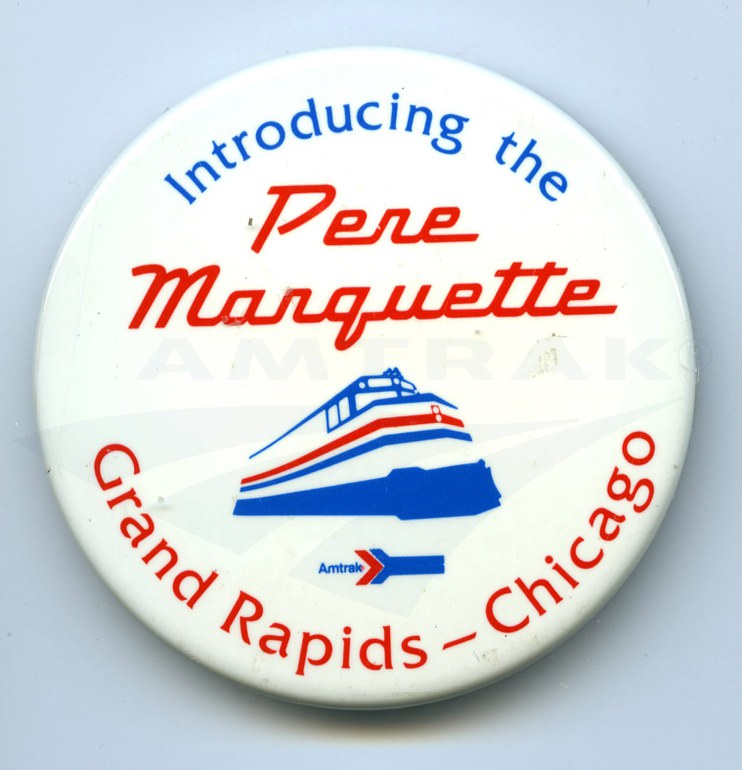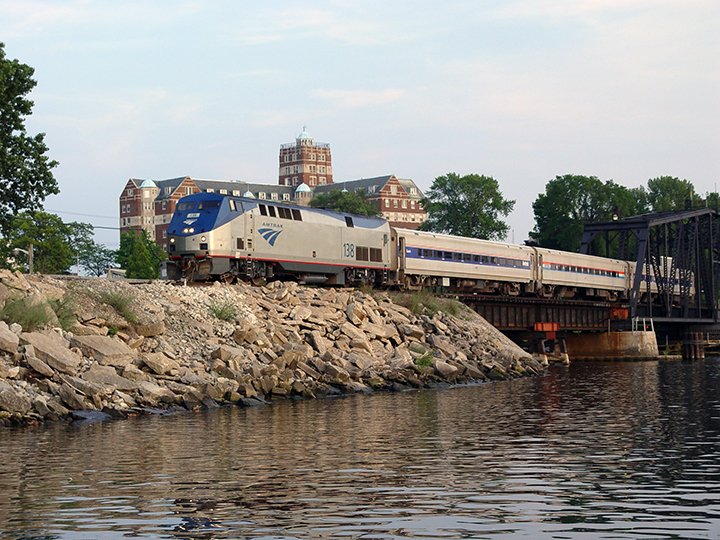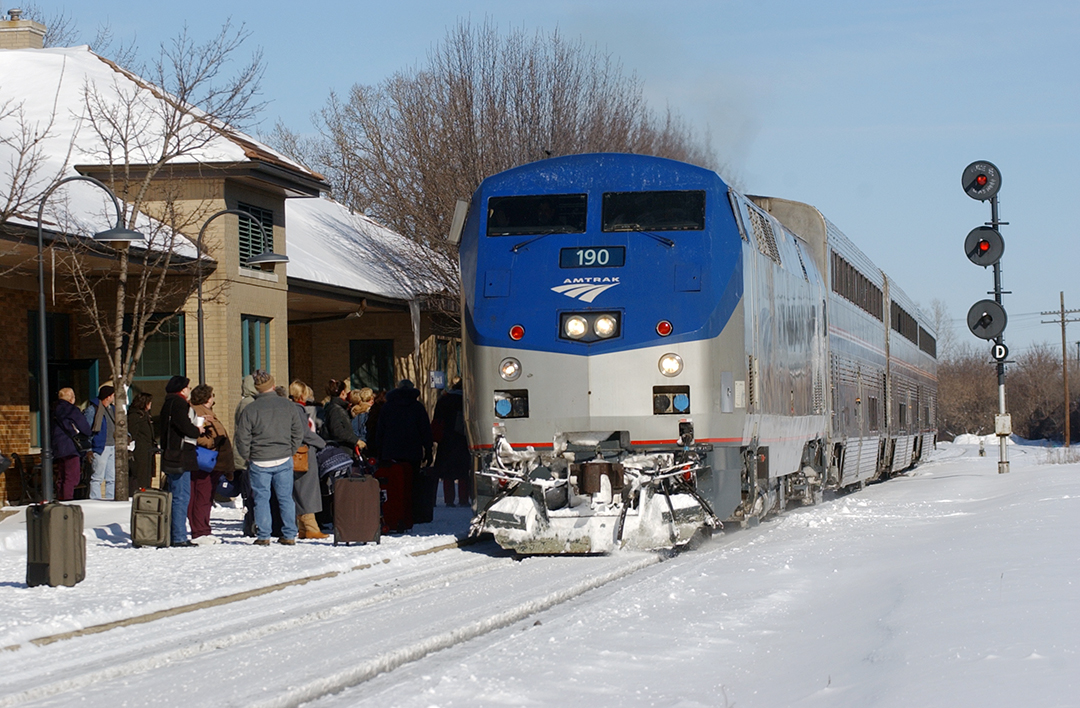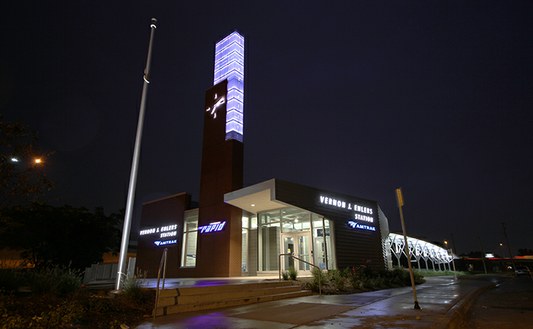A Closer Look: The Pere Marquette
CommentsAugust 5, 2016

Regular service began August 5, 1984.
The Amtrak Archives contains dozens of buttons and pins that span the company’s 45 year history. Primarily developed by the Marketing department, they highlighted new services, company-wide safety programs, sales promotions and other initiatives. Some were meant to be worn by station staff and onboard crew members, while others were given to customers as souvenirs.
Going through the collection, we recently came upon this colorful button celebrating the new Amtrak Pere Marquette service between Grand Rapids, Mich., and Chicago. The service takes its name from an earlier train run by the Pere Marquette Railway (which was absorbed by the Chesapeake & Ohio Railway in 1947). The original Pere Marquette was a streamlined train that began operating between Grand Rapids and Detroit in 1946. Two years later the name was also applied to new trains operating between Grand Rapids and Chicago.1
As newly-created Amtrak prepared to take over most of the nation’s intercity passenger rail services on May 1, 1971, it had to be determined which existing trains would be included in the final national system. The Rail Passenger Service Act of 1970 that created Amtrak directed the U.S. Secretary of Transportation to lay out a preliminary map with recommended route endpoints (Amtrak would then determine the actual routings). States and other stakeholders were allowed to comment on the basic system map before its adoption.2
The Grand Rapids-Chicago route – one daily roundtrip by 1970 – was not included in the final system due to concerns over potential ridership, profitability and competition from other modes such as automobiles. Although Furniture City and other communities lost passenger rail service, they did not forget about the train.
In 1984, through the strong backing of the Michigan Department of Transportation, which provides financial support for the service, Amtrak launched a revived Pere Marquette. On Aug. 4, special guests were welcomed aboard an inaugural train that covered the entire 176-mile route. Decorated with American and Michigan flags, F40PH locomotives Nos. 219 and 218 were in the lead. The consist included nine Amfleet coaches, a Heritage lounge car, a Heritage sleeping car and track inspection car No. 10000.3
Crowds greeted the train at intermediate stations in New Buffalo, St. Joseph-Benton Harbor, Bangor, Holland and Grand Rapids, Mich., as well as Hammond-Whiting, Ind.4 Regularly scheduled passenger service began the following day. The commemorative button shown above features a stylized F40PH wearing the Amtrak Phase III paint scheme. Below it is the company’s first service mark, which was used from 1971 until 2000.
The Pere Marquette remains a popular travel option for residents of southwest Michigan, which boasts beautiful lakefront beaches and communities known for their rich Dutch heritage. Nearly 96,000 customers rode the train in Fiscal Year 2015. In addition to the Pere Marquette, the state also funds the Wolverine Service (Pontiac-Detroit-Ann Arbor-Chicago) and the Blue Water (Port Huron-East Lansing-Chicago). Altogether, more than 830,000 customers rode the Michigan trains last year.
In October 2014, local and state leaders joined with residents to dedicate a new, modern station in Grand Rapids. Named for former Congressman Vern Ehlers, the building sports a soaring clock tower with a crown of perforated stainless steel; at night, LED lights from within create a glowing beacon for travelers. Central Station, served by local Rapid and intercity buses, is located directly north of the new rail facility, thereby creating a convenient intermodal hub in the heart of the city.
Were you part of the Pere Marquette inaugural celebration? Do you have a favorite memory of the train? Share your thoughts with us in the comments section!
1 Craig Sanders, Amtrak in the Heartland (Bloomington, Ind.: Indiana University Press, 2006), 209.
2 Amtrak, Annual Report of National Railroad Passenger Corporation (Oct. 30, 1970 – Oct. 29, 1971) (Washington, D.C., 1971).
3 “Railroad News Photos,” Trains, November 1984.
4 Pere Marquette service to Hammond-Whiting and New Buffalo was later discontinued, but the stations are served by other Michigan Service trains.







